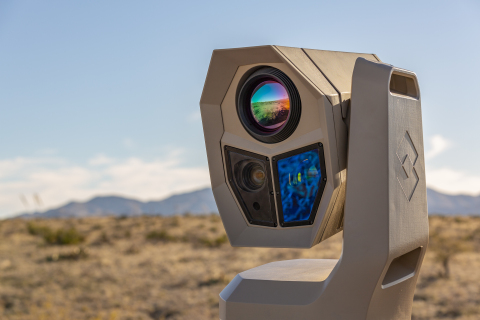The military electro-optics infrared systems market is expected to be worth USD 13.7 billion in 2023. At a 6.0% CAGR, the market is projected to reach USD 24.5 billion by 2033. The growing demand for enhanced observation and reconnaissance capabilities in contemporary warfare is one key factor.
Global military forces are looking for sophisticated electro-optic infrared systems to improve situational awareness, target acquisition, and information collection. Infrared technology combined with electro-optic systems allows for greater vision and detection even in low-light or severe weather circumstances, providing military forces with a major edge on the battlefield.
Furthermore, the increased emphasis on border security, terrorist activities, and defense modernization projects promotes demand for military electro-optics infrared systems.
Get The Sample Copy Of Report:
https://www.futuremarketinsights.com/reports/sample/rep-gb-17293
The high expense of these systems is due to the complexity of electro-optics infrared technology as well as the demanding quality and performance criteria enforced by military authorities. Furthermore, the financial limits experienced by some military organizations, as well as the long procurement procedures, may offer hurdles for industry producers and suppliers. Balancing cost-effectiveness with quality and performance remains a key problem for industry participants.
The growing use of unmanned aerial vehicles (UAVs) and unmanned ground vehicles (UGVs) in military operations presents a huge potential for makers of electro-optics infrared systems. To properly carry out surveillance, target tracking, and information collection tasks, these platforms need powerful electro-optic sensors and imaging systems.
Furthermore, the growing need for integrated solutions that merge electro-optic infrared systems with other technologies like artificial intelligence, machine learning, and data analytics opens up new opportunities for innovation and market penetration. Collaborations with military agencies, research institutes, and technology partners may help firms in this area discover new prospects.
Digital imaging allows for enhanced image processing, real-time analysis, and seamless connection with other digital systems, all of which improve overall operational performance. Another noteworthy advancement is the miniaturization and lightweight electro-optics infrared systems. These tiny devices increase mobility, simplicity of deployment, and integration with wearable technology, enabling military personnel to carry out their tasks more efficiently and effectively.
Key Takeaways from the Military Electro-Optics Infrared Systems Market:
- The United States owns a significant portion of the global military electro-optics infrared systems industry, with a predicted market value of USD 5 billion by 2033 and a CAGR of 6.0% from 2023 to 2033.
- With a predicted market value of USD 912 million by 2033 and a CAGR of 5.6% from 2023 to 2033, the United Kingdom has a large market share.
- The military electro-optics infrared systems industry in China is rapidly expanding, with a predicted market value of USD 6.2 billion by 2033 and a CAGR of 6.0% from 2023 to 2033.
- Japan has a significant market share with a predicted market value of USD 5.1 billion by 2033 and a CAGR of 5.9% from 2023 to 2033.
- South Korea boasts considerable potential in the military electro-optics infrared systems industry, with a predicted market value of USD 1.2 billion by 2033 and a 5.6% CAGR from 2023 to 2033.
- The airborne platforms category emerges as a prominent force in the military electro-optics infrared systems market, with a CAGR of 5.9% from 2023 to 2033.
- The Electronic Support Measure (ESM) Systems segment occupies a major place in the military electro-optics infrared systems industry, with a CAGR of 5.7% from 2023 to 2033.
Request Customization of the Report:
https://www.futuremarketinsights.com/customization-available/rep-gb-17293
How are Key Players Keeping Up with the Intense Competition in the Market?
The military electro-optics infrared systems industry is extremely competitive, with numerous key manufacturers contending for market dominance and attempting to stay at the cutting edge of technological breakthroughs. The competitive environment is marked by strong competition, product innovation, strategic alliances, and a focus on serving the changing demands of military organizations throughout the globe.
Key industry players such as BAE Systems PLC, Elbit Systems Ltd., General Dynamics Corporation, Aselsan A.S., and Bharat Electronics Ltd. are consistently investing in R&D to develop cutting-edge electro-optics infrared systems that meet the specific requirements of military applications. These firms have established themselves as industry leaders by utilizing their knowledge and considerable experience to provide high-performance and dependable solutions.
To keep ahead of the competition, key players use a variety of techniques. First, they emphasize continual innovation to include cutting-edge technology and features in their goods. This involves the creation of high-resolution imaging sensors, increased thermal imaging capabilities, and better signal processing techniques. These businesses attempt to obtain a competitive advantage by providing higher performance and functionality.
Second, given the competitive environment, strategic cooperation and partnerships are critical. To exploit complementary skills and resources, key parties build partnerships with other military contractors, research institutes, and technology vendors. Collaborations like this allow them to enter new markets, exchange information, and increase the pace of invention.
Get Full Report Now:
https://www.futuremarketinsights.com/checkout/17293
Segmentation Analysis of the Military Electro-Optics Infrared Systems Market
By Platform:
- Air
- Land
- Naval
By System:
- Electronic Support Measure (ESM)
- Imaging System
- Targeting System
By Technology:
- Uncooled
- Cooled
By Imaging Technology:
- Multispectral
- Hyperspectral
By Region:
- North America
- Latin America
- Europe
- East Asia
- South Asia
- Oceania
- Middle East & Africa
About Future Market Insights (FMI)
Future Market Insights, Inc. (ESOMAR certified, recipient of the Stevie Award, and a member of the Greater New York Chamber of Commerce) offers profound insights into the driving factors that are boosting demand in the market. FMI stands as the leading global provider of market intelligence, advisory services, consulting, and events for the Packaging, Food and Beverage, Consumer Technology, Healthcare, Industrial, and Chemicals markets. With a vast team of over 400 analysts worldwide, FMI provides global, regional, and local expertise on diverse domains and industry trends across more than 110 countries.
Contact Us:
Future Market Insights Inc.
Christiana Corporate, 200 Continental Drive,
Suite 401, Newark, Delaware – 19713, USA
T: +1-845-579-5705
For Sales Enquiries: sales@futuremarketinsights.com
Website: https://www.futuremarketinsights.com
LinkedIn| Twitter| Blogs | YouTube




